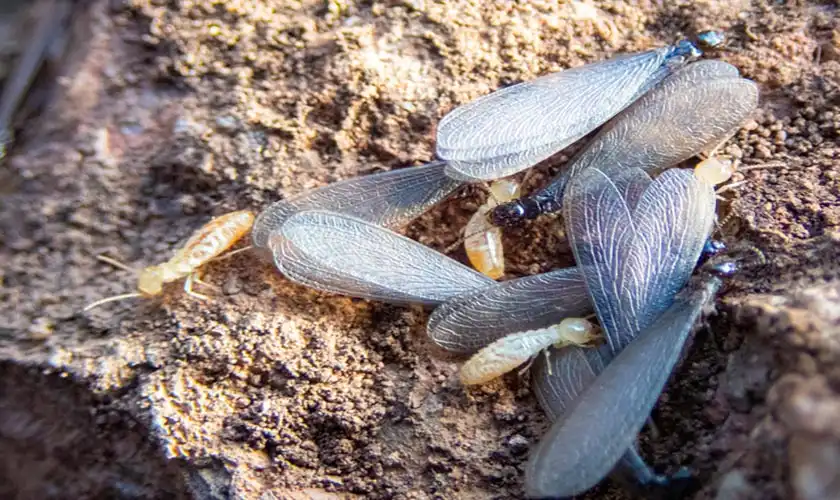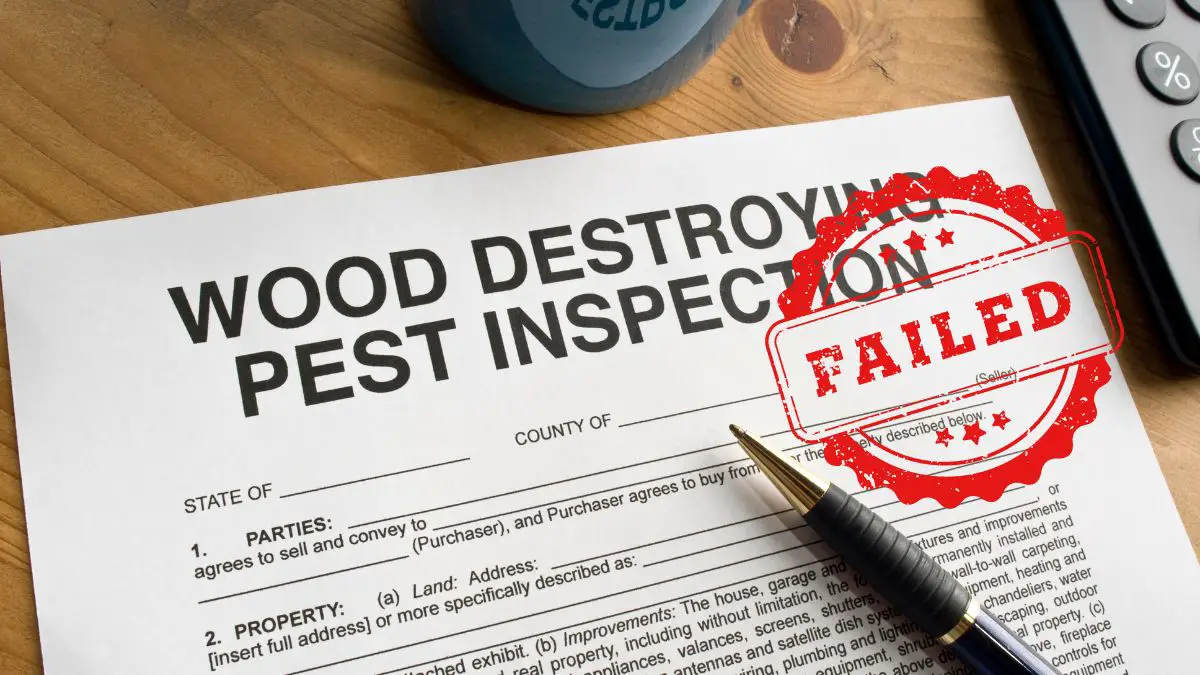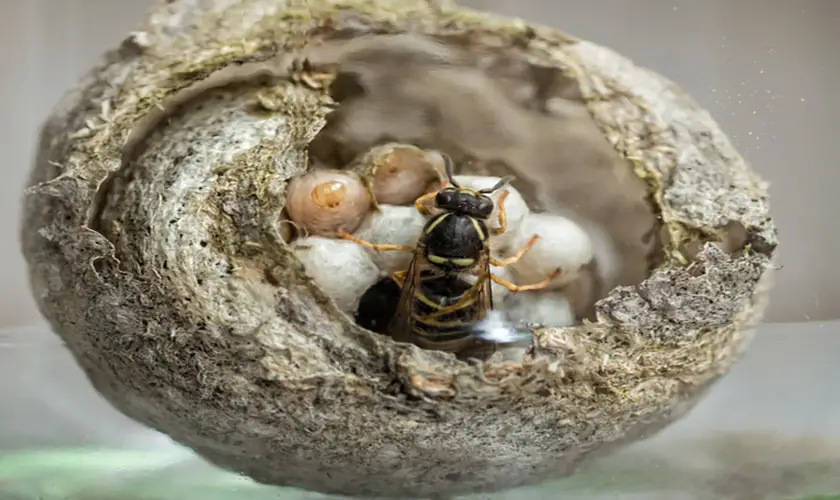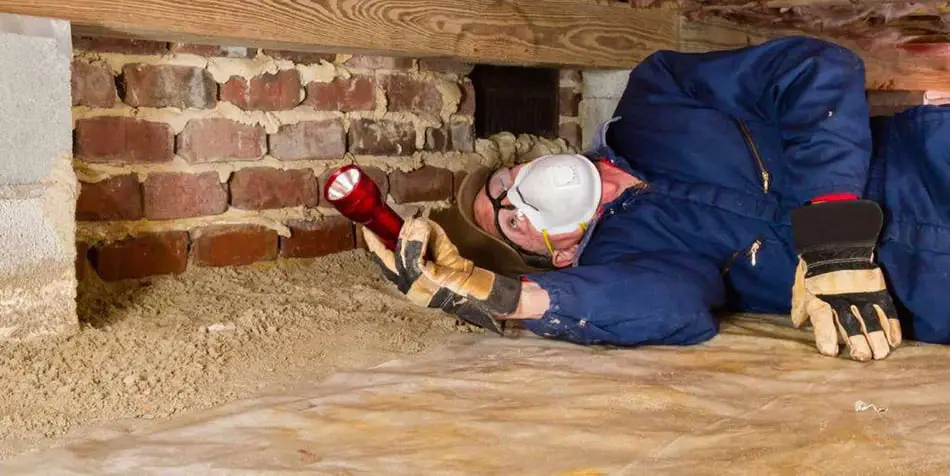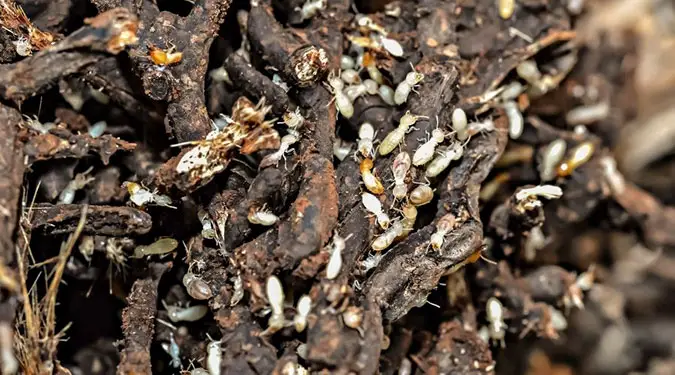
Anyone who has previously dealt with termites could tell you that getting rid of them can be an absolute nightmare, not to mention the costs involved in replacing all the damaged wood they chewed through. Termites have been a pain in many people’s necks for decades, and it doesn’t seem like they’ll give up the fight any time soon.
Several options are available when trying to rid the walls of your home of termites. These solutions include utilizing professional services or deploying do-it-yourself termite killing products designed to give long-lasting relief.
If you suspect termites have invaded the walls of your home, rest assured, there are several ways to effectively identify if there is an infestation, which species has infiltrated your walls, and how to rid your home of these nasty insects.
Get FREE quotes from licensed pest control technicians in your area today. Whether you need a termite inspection or a full treatment, We Can Help! All technicians are screened, licensed, and insured.
How To Terminate Termites Living In A Wall – DIY Methods
The first action you need to take to ensure that any attempt to rid your home of termites permanently is successful is to remove any excess wood that might be lying outside your home. If termites still have access to food, any attempts will inevitably fail, and termites will replenish their numbers. Ensure you rid your yard of any dead tree stumps that might still be around and any other plant-based debris.
To ensure termites don’t have a chance of reentering your home after dealing with the infestation, you need to cut off all the access points they used in the first place.
Patrol the perimeter of your house and look for any small openings like air vents or cracks in the walls or foundation and seal them up. Pay particular attention if you have decking or fencing installed, as this will likely be their next target.
Due to the rise of the termite population, companies have developed several treatment solutions that you can purchase at your local store at a fraction of the cost of hiring a professional extermination service.
Option 1 – Termidor Foam
Consider using this interior foam if the termites are already inside your wall. This foam works exceedingly well when injected directly into the wall’s affected area that termites have already chewed through.
This solution is safe enough to use in restaurants and other food-handling buildings. Ensure that you seal the hole after administering this treatment to keep household pets and children from contacting the foam. It is a poison, after all, and is designed to be lethal.
Option 2 – Ortho Home Defense Max
This concentrated spray boasts long-lasting defensive capabilities of up to five years. It is available in both trenching and non-trenching formats. Bifenthrin is a similar agent that professional exterminators use. This cheap solution packs a devastating punch when applied correctly.
Option 3 – Spectracide Terminate Stakes
Each pack contains fifteen stakes that you can easily place all around the outside of your property. However, note that each stake only lasts around half a year and that if you are going to be using this solution long-term, you will have to replace the stakes often.
Option 4 – Liquid Termite Barrier
Using liquid termite barriers serves as a termite killer and a termite preventer. This liquid solution can form a barrier surrounding your home that kills termites upon contact. This solution is most commonly spread at the base of your home’s foundation.
However, that doesn’t stop you from using it around specific wooden structures, tree stumps, or firewood piles. If done correctly, a single application of this method will last up to ten years.
Option 5 – Boric Acid
Many professionals and homeowners have considered boric acid the best solution for a less harmful pesticide and more natural pest control solution. Boric acids kill most insects by targeting their metabolic and digestive systems, specifically termites.
A termite exposed to boric acid typically dies within three to seven days. Boric acid is not entirely natural but has much lower toxicity when compared to more traditional poisons.
Using a powder duster, spread the boric acid around areas that you suspect termites would frequent. Pay careful attention to any cracks or crevices you might find. This method is safe to use indoors, provided you can keep pets and children away from the powdered area.
Option 6 – Beneficial Nematodes
Look no further than beneficial nematodes for those who are exploring a more natural solution with no toxic chemicals. These microscopic roundworms feed on hostile insects. They are one hundred percent safe and have no effects on humans.
When these worms come into contact with harmful insects, they enter its body and start to devour their internal organs. While these roundworms feed on the inners of the insect, they release harmful gut bacteria that poison the insect’s blood, eventually killing the insect. After the insect dies, the roundworms continue to hunt for their next prey, multiplying along the way.
Be warned. Pesticides and chemicals are preferred over roundworms because they are incredibly effective at ridding your house of the infestation before it could cause massive structural damage.
Beneficial nematodes should be used as a deterrent rather than a comprehensive immediate extermination solution.
Here is a brief video explaining more information on what beneficial nematodes are:
Consider Hiring A Professional
Whether using the do-it-yourself termite solution or considering hiring a professional extermination company, you need to solve the problem before the termites can cause irreversible damage inside your walls.
Instead of spending countless hours looking for the termites yourself or deploying a practical solution, consider hiring a professional to assess the infestation properly. Professional pest control companies specialize in these situations and develop custom solutions for your needs.
Often people complain that DIY solutions do not last or are ineffective. Hiring a professional service will give you peace of mind and usually come with a warranty should the first round of extermination prove unsuccessful.
Remember. You can keep a lot of money by buying low-cost solutions in the short term, but long term, you will end up forfeiting a lot more if the problem is not dealt with quickly and effectively.
Suppose you are still unsure whether to call an exterminator or not. Ask yourself the following questions.
- Has the termite problem spiraled out of control?
- Which species of termite has invaded the walls of my home?
- Would I be capable of deploying a termite extermination solution effectively by myself?
- Would I risk losing my home’s value if this problem is not dealt with promptly?
- Are there any reputable extermination companies in my area that could provide lasting protection?
- Would there be any future costs I have to pay to any extermination company should I choose to hire them?
Why Getting Rid Of Termites Is Important
According to the Department of Agriculture, the cost to repair termite damage annually is an estimated $40 billion worldwide. Nearly 600,000 homes are destroyed each year by termites.
What does this mean to you as an individual? Well, if a termite infestation takes hold inside your walls and causes significant damage, the entire installation could collapse. Estimations to repair the damage caused by termites could devastate any family.
If you decide to get the experts involved, you could expect to pay anywhere from $1,500 to $5,000. The cost to hire a professional exterminator is peanuts compared to what you would pay to rebuild your home or replace an entire wall section.
7 Signs Of A Termite Infestation
Identifying a possible termite infestation isn’t all that difficult and doesn’t require a professional exterminator to identify quickly.
Here are seven signs that you can use to help identify any potential termite intrusion.
1. Hollow Sounding Wood
Termites devour your home from the inside out. If you suspect that a colony of termites has invaded some of the walls in your house, you can quickly identify the area they live in by tapping on the wall where you know the support beam is. If termites have been consuming the beam, it will sound hollow.
2. Swollen Walls Or Peeling Paint
Moisture invites termites into your home. If you find a specific area of your wall is starting to swell and the paint starts peeling around the swollen area, chances are you have a termite infestation. Termites that love moist wood are known to eat the inner layer of paint.
3. Termite Feces
Termites will leave droppings behind as they eat their way through your walls. These droppings are called frass and are small pellets that look like corn. Finding a pile of these droppings indicates that you have a termite infestation and need to address it quickly before it spreads to other areas of your home.
4. Termite Corridors (Wall Damage)
Termite eating through the wood in your walls often leaves large grooves along the wood grain. If you suspect termites are living in the walls of your house, look for the area you think they are eating away at, remove the drywall panel covering that section of wall near where the support beam is and inspect the wooden beam itself, paying close attention to any indentations you might find along the wood grain.
5. Tubes Of Mud
Small tubes of mud along the bottom of the walls indicate that there is termite activity present. Termites create small earth channels to serve as highways to access previously difficult-to-reach areas.
6. Piles Of Discarded Wings
If a swarm of termites has recently passed through your area and you failed to notice them midflight, look out for the wings they discard after reaching their destination. These wings are often found in spider webs, window sills, or near the termite’s colony.
7. Soft Knocking Sounds
If the thought of having termites living in the walls of your home isn’t creepy enough, you might be able to hear them banging their heads. Termite soldiers will knock their heads on wood to alert the rest of the colony that there is danger nearby. If you place your ear to the wall, you might hear them munching away at the support holding your home together.
What Attracts Termites?
Termites require two things in this world to stay alive, food and moisture. Termites will travel extensively to find a place to establish their colony within reach of an ample supply of wood.
Lucky for them and unlucky for you, your home is probably made of what they like to eat.
Unless you plan on entirely renovating your home and replacing all the wooden structures and supports with brick and mortar, your home will likely become a termite’s next target.
Termites will often attack large piles of wood left out in your yard or dead tree stumps that have not been completely removed from your property.
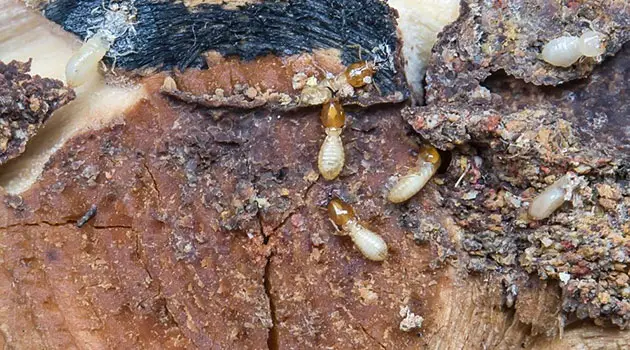
Different Types Of Termites And How To Identify Them
Much like humans, termites come in various shapes and sizes. Depending on the location of your house, you could have several different species attempting to invade the walls of your home.
- Dampwood Termites. Dampwood termites love moisture-rich environments, as their name suggests. They are larger than other termite species. These termites do not typically infest structures due to the lack of moisture that most buildings can hold. They are primarily found in coastal regions.
- Formosan Termites. This particular species of termite originated from China and is the most vicious and aggressive. They congregate in massive underground colonies, and if given a chance, they will construct intricate tunnels inside your home’s walls.
- Drywood Termites. Drywood termites are often the species that infest the walls of homes. They do not require soil to build intricate nets effectively. They will most likely be found in walls close to a water source, such as a water heater or leaky pipe.
- Subterranean Termites. Subterranean termites are arguably the most common type of termite. These types of termites are social insects that live in colonies. You can find their colonies in the millions across North America. They primarily reside underground or in dark, damp areas. They gain access to the surface through mud tubes.
Difference Between Termites And Carpenter Ants
People often mistake carpenter ants for termites. So how can we correctly identify their differences to ensure we have enough information to deal with the problem effectively?
Carpenter Ant Swarmers
Carpenter ants are black, and some have a reddish hue. They measure around half an inch to 5/8 inch in size. You can also plainly see that they have visible antennas, just like regular ants. They have reddish-brown wings that fold over their backs.
Termite Swarmers
Termite swarmers are browner than they are black but still very dark. They measure about three-eights of an inch long when including their wings. These termites have very much larger and more translucent wings compared to those of carpenter ants.
Identifying Carpenter Ant Damage
Carpenter ants prefer decayed wood left out to rot over several years as their initial nesting area. Once they have established themselves, they will move further into other areas of the structure they occupy, including walls, roofs, and floors. If you find galleries of wood that seem almost too smooth, carpenter ants are to blame. Carpenter ants chew wood. They don’t eat wood.
Conclusion
Termites are an incredibly invasive species of insects that will chew through every piece of wood they can find in your home if left to their own devices. They will eat your walls, floor, and roof if they can find a way up there. It would be fantastic if you did everything in your power to quickly and effectively rid your home of these nasty parasites before they have the chance to cause severe structural damage that would cost thousands of dollars to repair.
The threat of termite invasions will not stop any time soon. Their relentless attack should not stop us from taking up arms and fighting back. Whether you use professionals or draw up your battle plans, always ensure you do it safely and ensure that your family understands what needs to be done to get these critters out of your home and what they need to do to keep themselves and their pets safe.
Get FREE quotes from licensed pest control technicians in your area today. Whether you need a termite inspection or a full treatment, We Can Help! All technicians are screened, licensed, and insured.


